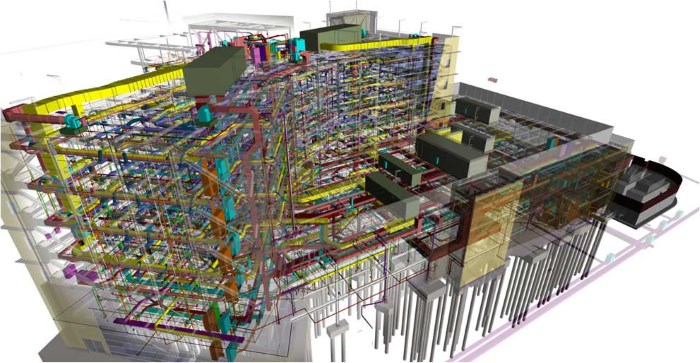As one of the key players in the CAD industry, what Autodesk does impacts on a wide variety of fields. Companies around the world have made use of its software to create everything from mountain bikes to the Shanghai Tower. As such, when Autodesk speaks, the engineering world listens.
Autodesk takes its influential position seriously, and attempts to act as an educational leader in CAD. It does so in a variety of ways, but one of the most notable is Autodesk University. This annual event, whose history spans more than two decades, started out in Las Vegas. However, over recent years, Autodesk have launched additional international events. Last week saw the event come to London for the first time. So, what did we learn from Autodesk University London 2017—and what can we look forward to? Read on to find out.
About Autodesk University

Before we go into detail on Autodesk University London, let’s back up a little and give a bit of history. The story starts with an Autodesk user event which took place back in 1993, near to Autodesk HQ in San Francisco, CA. Though not yet officially titled “Autodesk University”, it laid the foundations for all future events. The conference acted as a means for CAD users to learn from some of the industry’s leading lights, but also enabled them to meet peers and swap notes, tips and tricks. Naturally, the event was a huge success.
Following on from the first successful edition, Autodesk University quickly became an annual event. After moving around various U.S. locations throughout the 1990s, AU found a permanent home in Las Vegas from 2000 onwards. However, CAD is a global industry, and Autodesk eventually decided to expand AU internationally. The first non-U.S. Autodesk University events were the 2008 events in Shanghai, China and Tokyo, Japan.
Now, Autodesk University events take place across the globe, with events in 14 different countries in 2017. This includes the very first Autodesk University London event. If you still can’t make it, however, don’t worry—conference material is available on the AU website. It’s a fantastic free resource for CAD students, and provides plenty of helpful tips and tricks for AutoCAD, Revit, and many other Autodesk programs.
Autodesk University London 2017
Kicking off 2017’s marathon of 14 AU events was Autodesk University London 2017. The event has been hotly anticipated ever since it was first announced last November, and it’s fair to say that it did not disappoint.
Held in London’s Tobacco Dock from the 21st-22nd June, Autodesk University London took place in the wake of Andrew Anagnost‘s appointment as Autodesk CEO. Though not present in London, he appeared via Skype to discuss the theme of AU London: “the future of making things”. So, what exactly is the future? If Autodesk is right, it’s one where the environment is not created by humans, but created for them—by machines.
Machine learning
Speaking on machine learning during the opening keynote presentation was Autodesk’s head of machine intelligence, Mike Haley. He noted that the impact of cloud on CAD was a shift from finite to abundant computational power.
With this, our tools are no longer directive, but are instead adaptive. This means that instead of directing our tools to create a design, “you just need to describe the problem… and the tool helps you discover what is possible”. This capability is generative design: one of the major talking points in the future of CAD.
Generative design is creating new designs that humans could never have created—but more interestingly, it’s also beginning to understand people. To explain this, Haley used the example of an office space in Canada. Generative design helped to create a space that “minimized distractions, maximized outside views, and prioritized personal relationships”.
In the field of manufacturing, Haley explored how the move from directive to adaptive tools has impacted on robotics. His examples were Autodesk’s robots Ash and Bishop. Autodesk is exploring how to “give Ash the freedom to 3D print in metal all on his own”. Engineers do not direct Ash in a traditional manner; instead, they interact with Ash through a VR environment.
Meanwhile, Bishop learned to assemble Lego bricks in a virtual environment—hence not being constrained by real-world time. From there, Bishop could then learn to grasp and assemble any object—and, thanks to the cloud, so too could all robots. The impact of these developments is potentially groundbreaking for the fields of engineering and manufacturing.
Changing the future of design
Whilst much of the major buzz was around machine learning, another notable theme was virtual reality. Talks at the event focused on the potential for VR to become “a viable consumer product”—not merely a niche tool. With VR reaching a wider audience, designers across varied fields can now create and visualize in a virtual world. The immersive nature of VR not only makes creation easier and reduces the need for physical models, but also allows for “story living”: changing how we interact with narratives.
Meanwhile, other talks focused on the possibilities of BIM. There was excitement around the ability to use BIM to “quickly make something in the virtual world which exactly replicates the real world”. However, there was also acknowledgement of the stumbling blocks to greater adoption of BIM: the learning curve, a need for exemplar projects, and the misconception that BIM is only for major projects.

More efficient planning and design through BIM
While much of Autodesk University London focused on the future, Foster + Partners showed how design is already changing. Just one example was the firm’s design for the new Mexico City airport. The airport designers had to contend with soft soil, seismic activity, and even a nearby volcano—whilst also creating a sustainable building. The solution? A truly unique building that “floats”, adapts to quake forces, and is “the most sustainable on the planet”.
Looking forward to Las Vegas
With the first Autodesk University London a success, we’re now looking ahead to the rest of the AU calendar—particularly the main event in Las Vegas on November 14-16. Just as the London event was ending, Autodesk notified the successful speakers who will be teaching classes in Las Vegas. They also published a preview of some of the classes that will appear at the November event.
The overarching theme of the Las Vegas event will be the same: the future of making things. Meanwhile, the classes will discuss topics as diverse as AR/VR, generative design, additive manufacturing and industrial design. If you’re interested in attending, tickets are available now.
Interested in learning more? Visit our guide to everything you need to know about Autodesk, or check out a brief history of AutoCAD.

